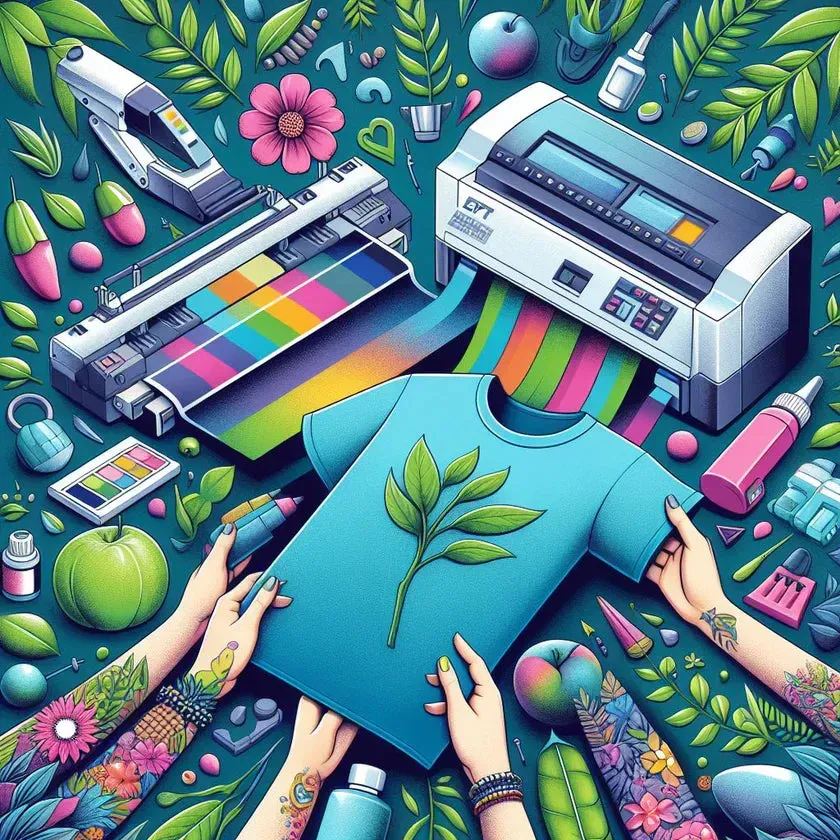The environmental impact of UV DTF printing has become a focal point in discussions surrounding modern printing practices. This innovative technology utilizes ultraviolet light to cure inks rapidly, significantly lowering energy consumption compared to traditional printing methods. With its eco-friendly printing technology, UV DTF printing not only reduces volatile organic compounds but also promotes sustainable printing methods that align with a growing global demand for greener solutions. As the industry shifts toward more conscious production, the recyclability of printing materials used in UV DTF processes plays a crucial role in minimizing waste and protecting our planet. This blog post delves deeper into the environmental benefits and challenges associated with UV DTF printing, illustrating its potential as a frontrunner in eco-conscious printing options.
UV DTF printing, or ultraviolet direct-to-film printing, exemplifies a shift toward more sustainable practices within the print industry. Also referred to as eco-sensitive printing solutions, this technique boasts rapid curing times and reduced energy usage, thus presenting itself as an alternative worth considering for manufacturers and consumers concerned about their ecological footprints. Through the adoption of efficient, sustainable printing technologies, the industry is not only addressing immediate environmental concerns but also paving the way for a future where green printing is the norm. By exploring the intricacies of this method, we can better understand how UV DTF printing aligns with the wider goals of sustainability and recyclability in materials.
The Basics of UV DTF Printing Technology
UV DTF printing stands for Ultra Violet Direct to Film printing, an innovative printing method that bridges the gap between traditional practices and the need for eco-friendly solutions. This technique directly prints images onto a special transfer film, which can be applied to various substrates such as fabric, glass, and metals. One of its standout features is the use of ultraviolet light to cure the inks instantly, eliminating the need for additional drying processes, which can significantly cut down production time and energy consumption.
This modern approach not only enhances productivity but also allows for more vibrant and detailed prints. As demand for eco-friendly printing technology grows, the versatility and efficiency of UV DTF printing make it an attractive option for manufacturers aiming to reduce their environmental impact without compromising on quality.
Frequently Asked Questions
What environmental impact does UV DTF printing have compared to traditional printing methods?
UV DTF printing significantly reduces environmental impact by minimizing the use of solvent-based inks that emit volatile organic compounds (VOCs). Unlike traditional methods, UV DTF printing uses UV inks that are generally VOC-free, improving air quality and lowering health risks. Additionally, this method boasts energy savings of up to 70%, further enhancing its sustainability profile.
Is UV DTF printing considered an eco-friendly printing technology?
Yes, UV DTF printing is recognized as an eco-friendly printing technology. Its ability to use less energy through instantaneous ink curing and the reduction of harmful solvent-based inks makes it a safer choice for the environment. Furthermore, its on-demand production approach reduces waste, contributing to more sustainable printing practices.
How does UV DTF printing improve waste management in the printing industry?
UV DTF printing improves waste management by employing an efficient on-demand production method, allowing inks to be applied precisely where needed. This targeted application results in significantly less leftover ink and material waste compared to traditional printing techniques, fostering a cleaner and more sustainable operation.
What challenges does UV DTF printing face in terms of environmental sustainability?
Despite its advantages, UV DTF printing faces challenges related to the potential environmental impact of certain UV inks and microplastics in transfer films. Additionally, the chemical processes involved in manufacturing UV inks can still raise environmental and safety concerns, necessitating strict chemical management to mitigate these effects.
What materials are used in UV DTF printing and their recyclability?
UV DTF printing involves various substrates, many of which are increasingly recyclable as manufacturers strive for sustainability. However, some transfer films may still present recyclability challenges. The industry is continuously advancing towards using materials that align better with eco-friendly standards and are easier to recycle.
Why is energy efficiency an important factor in the environmental impact of UV DTF printing?
Energy efficiency is crucial in the environmental impact of UV DTF printing because it reduces the carbon footprint associated with the printing process. By utilizing a rapid curing method that requires significantly less energy compared to traditional printing techniques, UV DTF printing helps lower overall energy consumption, making it a more sustainable choice for manufacturers.
| Key Points | Details |
|---|---|
| Reduction of Solvent-Based Inks | UV DTF printing greatly minimizes the use of VOC-containing inks, improving air quality and operator safety. |
| Lower Energy Consumption | Uses up to 70% less energy compared to traditional methods due to quick UV ink curing. |
| Waste Management | On-demand production reduces ink and material waste, promoting cleaner operations. |
| Recyclability and Material Usage | Focus on recyclable substrates, though some materials still present disposal challenges. |
| Challenges and Criticisms | Concerns over UV ink impacts, microplastics, and the environmental safety of the manufacturing process. |
Summary
The Environmental Impact of UV DTF Printing showcases significant benefits for the printing industry, such as reduced harmful emissions, lower energy consumption, and minimized waste production. By utilizing UV lights for instant ink curing, this method not only enhances production efficiency but also promotes sustainability compared to traditional practices. Despite its advantages, it faces challenges including potential long-term effects of its materials and safety concerns in ink manufacturing. Continuous research and innovation are crucial in addressing these issues while harnessing its ecological benefits. Overall, UV DTF printing represents a promising advancement toward a more sustainable future in the printing industry.



